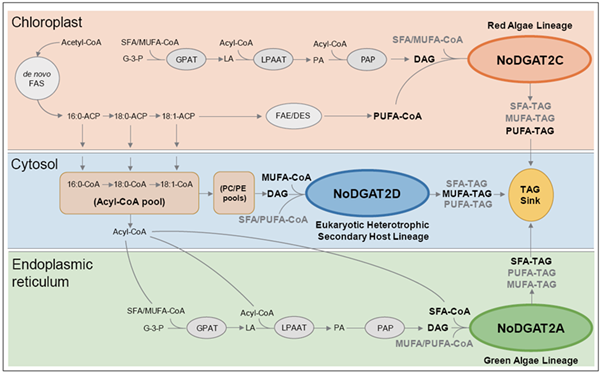Scientists Produce Designer Oils in Industrial Microalgae
Due to the high photosynthetic growth potential and rich oil content, many oil-rich algae have aroused people's interest. They could be employed as feedstock for scalable production of biofuels and biomaterials from carbon dioxide. As a main form of energy storage in microalgal cells, triacylglycerol (TAG) molecule consists of three fatty acids (FAs) moieties. The diversity and relative abundance of these FAs are the most important factors to determine the quality, utilization and economic value of algal oil.
The findings unraveled functional stratification in TAG-associated saturated FA (SFA), monounsaturated FA (MUFA) and polyunsaturated FA (PUFA) preference among type II diacylglycerol acyltransferases (DGAT2s) as a key mechanism of oleaginousness in industrial microalgae. It demonstrated that the genetic diversity, ratio of transcript abundance and functional complementarity derived from secondary symbiosis can be exploited for rational design of oil property and simultaneous enhancement of oil productivity in industrial microalgae. This established a novel strategy to simultaneously improve productivity and quality of oils from industrial microalgae.
The related progresses were published in Molecular Plant. The works were supported by the National Natural Science foundation of China. 
Figure 1. Mechanistic Model of the TAG Assembly Lines in Industrial Microalga Nannochloropsis oceanica (Image by XU Jian and XIN Yi)